Istanbul. The chaos of 13 million lives. A city bursting at the seams and simultaneously thriving. A place where you cannot escape over 2,000 years of history - nor would you want to. Where the East literally meets the West but it feels more like modern meets ancient. A fantastic place to spend a few days.
1.
A bit about the city. Founded by Greeks but developed by the Romans (most notably, they left the Hagia Sophia) whose Constantine made it the new capital of the empire. Inherited by the Byzantines who built it into the largest city of world. Conquered by the Ottomans; it took 100 years to recover. Now ruled by Turks, it has exploded in population (from 680,000 in 1927 to 1,000,000 around 1950 to 13,000,000 or so today) as waves of first Ottoman refugees and then poor Turks flooded the city seeking safety and economic opportunity.
Each of these rulers have left their fingerprints on the city; most obvious are the great monuments left by each. More subtle are the neighbourhoods. This is not really a city proper, but a series of mini-cities.
There's modern and hip Begolyu; Muslim women sip wine in restaurants, head scarves are rare and the boutiques all have well labeled prices. There's a modern art gallery with world class pieces. Movies are filmed. But don't think it's all Western decadence - in the alleys off Istiklal you're as likely to find people playing backgammon, drinking tea and smoking a hookah as you are to find people drinking beer and cavorting.

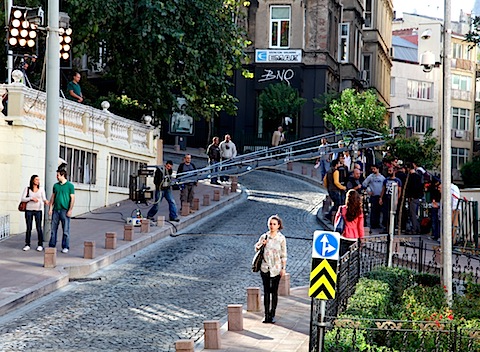
In ancient Fatih, the crowded, narrow medieval streets are packed with open-faced stores hawking everything (negotiate furiously!), businesses shut for an hour at midday when the mosques overflow and nary a woman isn't wearing a head scarf.
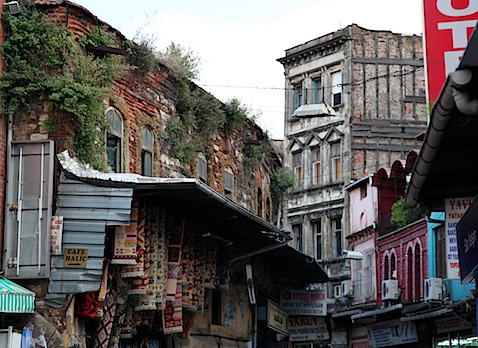
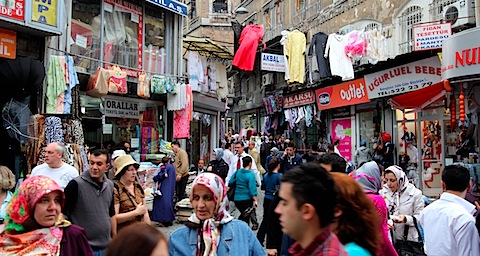
And then there's the entire Asian shore, where well planned neighbourhoods abound with people simply living their lives and trying to create a better life for their children; the glass-walled buildings of multinationals border its many highways.
The city proper is incredibly colourful, bursting with it:

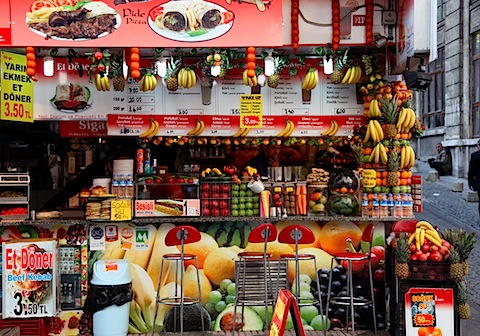
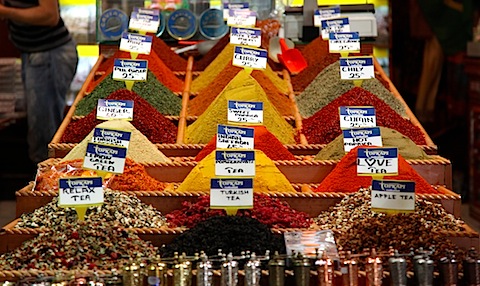
Curiously though, the locals seem to only wear dark colours. You can observe this as, on the weekend, you can conceivably walk the many kilometers from the Grand Bazaar down to the Galata Bridge via the Spice Market and then over to Istiklal and eventually Taksim square and spend the entire time in a crowd of thousands:

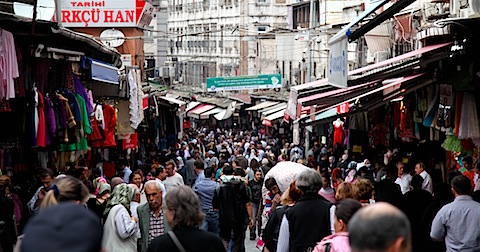


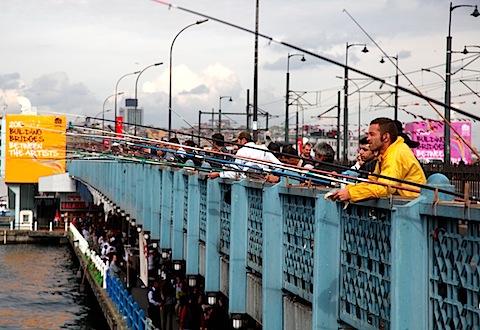
Perhaps the dark clothes reflect the huzzun (melancholy) that Orhan Pamuk believes hangs over this city (his book, Istanbul, is required reading before visiting the city).
Interestingly, none of the photos above capture the feel of this city. This is a city of interfaces and thresholds. The joy of the city is walking the streets and, in the string of a few hundred meters, finding yourself careening from the lighting to hardware to clothing to outdoor equipment to banking districts. Along the way the streets buzz with deliverymen lugging hundred of pounds of goods and runners delivering tea or food. Men loiter smoking furiously. And when you turn corners you never know what you're going to see: wild dogs and cats, laundry hanging from a second floor window, an old woman or man teleported from the 1700s disappearing into a closing door or the sudden appearance of a mosque or hammam or cobblestoned alley. You have a constant feeling that things are happening that you cannot understand and all of it is ruled by some sort on unknown code.



2.
The past 90 years have been confusing for Istanbul. The empire collapsed and the city was ignored and began to decay. Then it's population grew faster than anyone could imagine. The net result is that the city is undergoing massive change. The city used to be almost entirely wooden; you can still see this in some of the older neighbourhoods like Fatih. It can feel like going back in time:
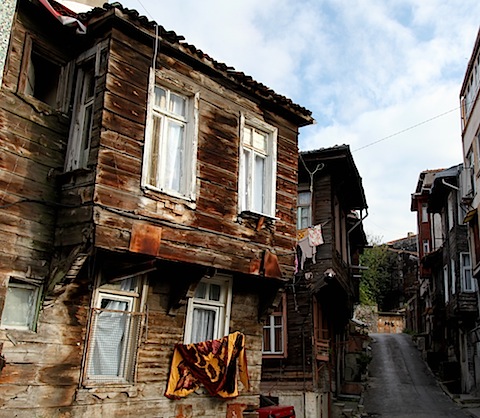
Many of these buildings were torched in the 1950s in a spree that would have brought a tear to the eye of a 1970's Bronx slumlord. However, you can still find many that have been restored:
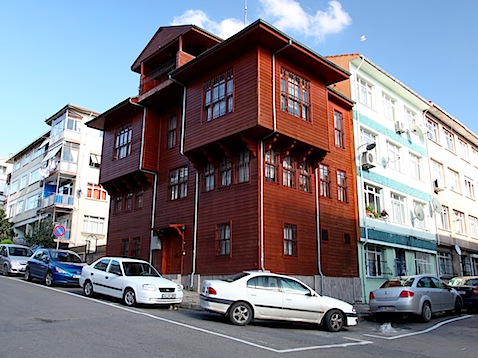
The burgeoning population meant that an incredible number of new buildings needed to be built. The older parts of the city went from two storeys to six overnight and the one-horse-wide streets are now clogged with some of the worst traffic in the world; if you hate horns, beware where you walk.
Also, many of these were built on the cheap and are now being torn down. Scenes like this are everywhere:
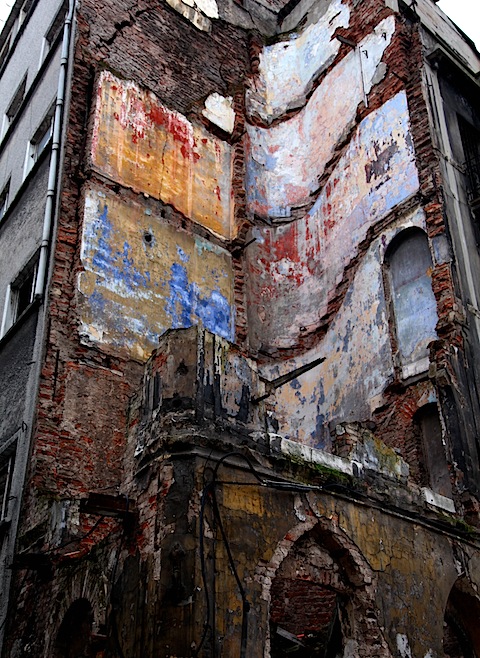
The city is reinventing itself in six to eight storey standards of glass, steel, plaster and terra cotta.
3.
But no dispatch on Istanbul would be complete without a few comments on its monuments. The sultan used Topkapi Palace to make it clear that Istanbul was an Ottoman city and there were no more Romans or Byzantines to be found.
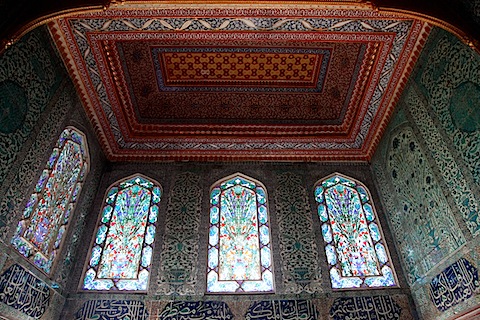
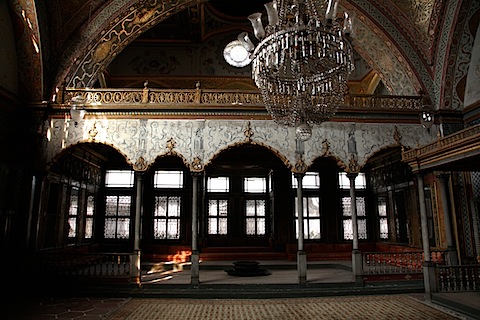


And the Hagia Sophia stands as a testament to Roman engineering combined with the clash of cultures:

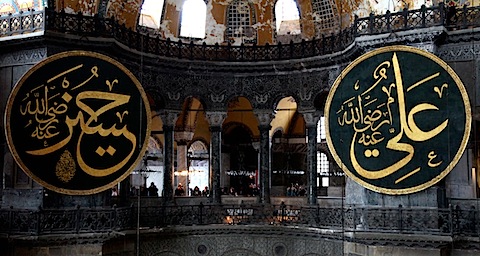
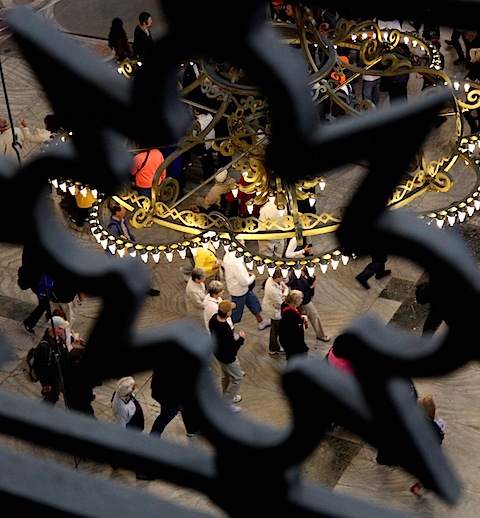
The Grand Bazaar is literally a city within a city, with every store beneath a covered arch. You can wonder aimlessly and quickly lose your sense of direction as there are no ways to see way to see any of the city's landmarks:
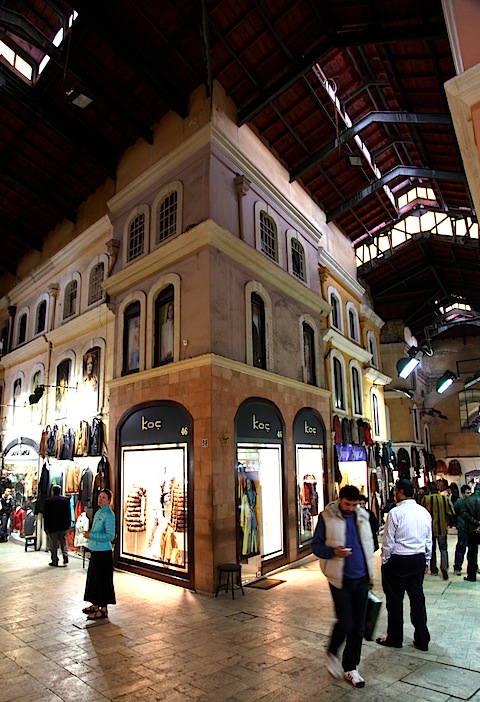

And then there are the ubiquitous mosques. They are everywhere, piercing the sky with their minarets while their stones plays tricks with the setting sun.
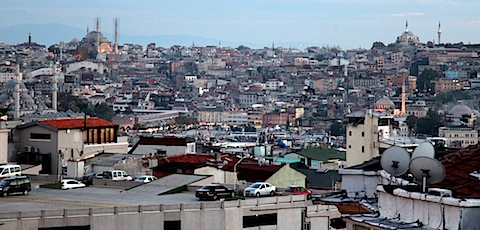
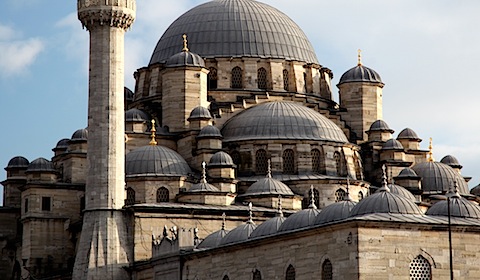
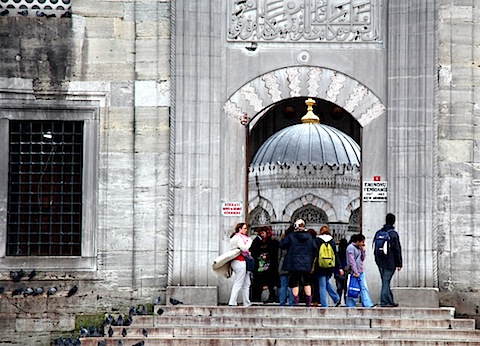
The sound of the call to prayer in Istanbul is haunting. Within minutes of each other, dozens (hundred? thousands?) of cries start to ululate over the sky. And within a few minutes it is all gone and it as if it never happened.
You could spend a month visiting the monuments of Istanbul (aqueducts, old city walls, fortresses...) but one additional one that should be on every visitor's list is the cistern. If it looks vaguely familiar, it may be because Sean Connery rowed across it in From Russia With Love.
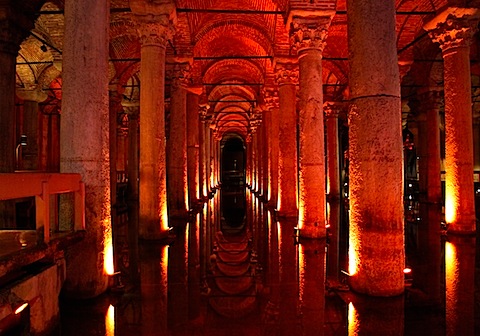
4.
For mild hapnophobes (fear of being touched) like myself, Istanbul can present some surprising issues. My first situation occurred when I went to get my hair cut. The actual hair cutting part was fine - no different from what I'm used to everywhere else I've had my hair cut. However, I learned that in Istanbul your haircut isn't done simply because your hair is cut.
The barbershop consisted of two men. A young artiste who cut hair and an older man whose sole purpose seemed to be to make tea (it's everywhere here and the national drink). However, his real job became obvious once the last strand was cut.
Through a series of grunts and gestures he directed me to lean over into a wash basin where steaming water had been surreptitiously running. He was soon lathering up my hair and running his firm old man hands across my scalp. Then down my face. A gentle poke in the eyes. A rub of the temples and cheeks. This was getting very awkward.
He then dried me off, but we were not done. My entire head - not just my scalp - was massaged. Then he worked his way down my neck and into the shoulders. Most people would enjoy this; I was trying not to squirm in my seat.
Still not done! He found time to slather me in first moisturizer, then aftershave and finally hair gel.
My hair was cut. I smelled nice. And my worst fears have been realized.
The other scenario I faced was going for a hammam: a Turkish bath. I found out that it basically involves you lying prostate, face down on a slab in a co-ed room with a piece of towel wedged between your butt cheeks while a man sits on the back of your knees and pounds your flesh. Not my idea of fun so I settled for a nice steam in the sauna instead.
5.
Turks are insanely patriotic people (or at least, their government is). Everywhere you go it is flags, flags, flags - and pictures of Attaturk.

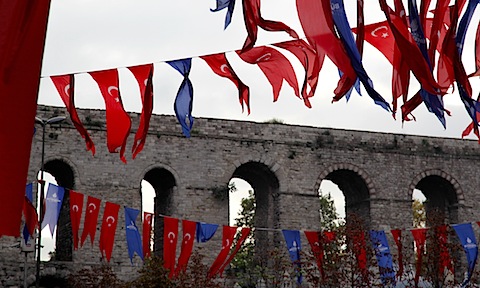
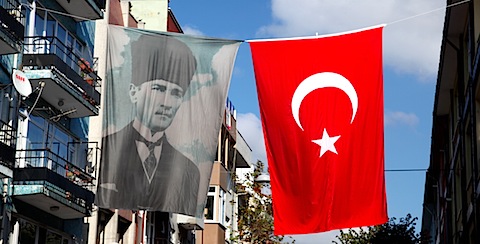
In fact, you if you sit in a hotel that overlooks the city, you can pass your time trying to count all the massive Turkish flags that dot the skyline; they're those massive flags that are normally only found in North America on car dealership lots at the edge of the city or next to a highway. They're second only to the mosque minarets in defining the skyline. And they flap beautifully in the morning air.
6.
The Turks love al fresco dining so cafes and open air restaurants abound. If you wander enough, you'll eventually find a place where grape vines have been strung across a cobblestone street and tables and chairs brought out.

But if unsurpassed quality is your goal, you will need to hunt a little further. One suggestion (thanks Jascha!) is Develi. The sign above the door says "Kebabs & Baklava" and they do not disappoint. They're also set in one of the cutest locations possible: a square surrounded by wooden houses and fishmongers.


And no visit would be complete without a visit to Ciya Sofrasi. The New Yorker did a 10,000 word article on them in the 2009 food issue; at the time I thought it bordered on hagiography but having eaten there, I now understand it was not.
The experience is incredible. The restaurant is on the Asian side of the city, so you need to take a ferry to Kadikoy. From there, you need to wander the poorly marked pedestrian streets (one of the few grievances you can lodge against this city), through food and fish markets and past deceptively similarly named restaurants until you find it.
You then serve yourself a vegetable plate. Normally, self service is inversely proportional to the quality of the food, but it's the opposite here. This mezze plate is one of the best things I've ever had, and it was all vegetarian:
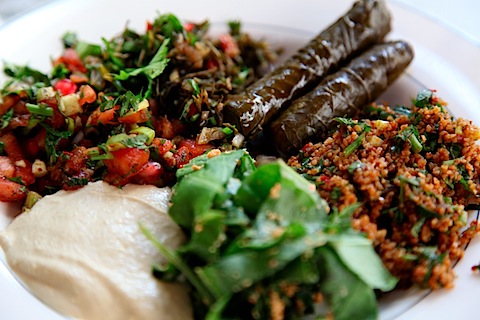
To order a main, you walk up to a chef who is keeping a dozen pots of various home-style dishes cooking. You order what you want (Icli Kofte - Turkish stuffed meatball, falafel, and lamb meatballs in a mint and pomegranate sauce for us) and it is brought to your table a few minutes later.
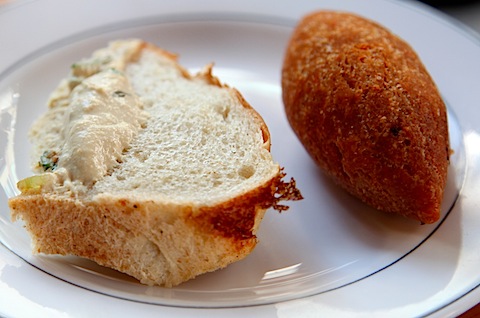

This was easily one of the five best meals I've had on our travels and it came with the added benefit of being incredibly cheap for Istanbul. Don't go to Istanbul - and you need to come here - without a visit.